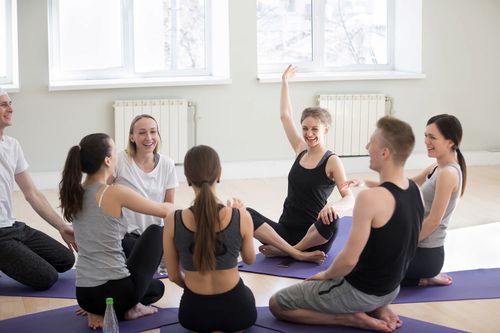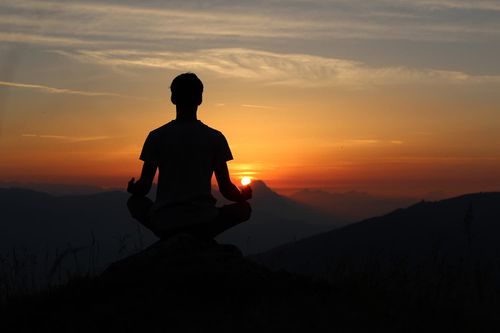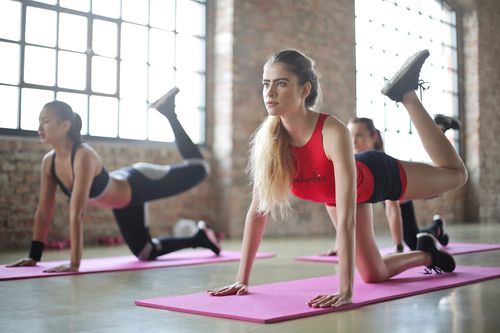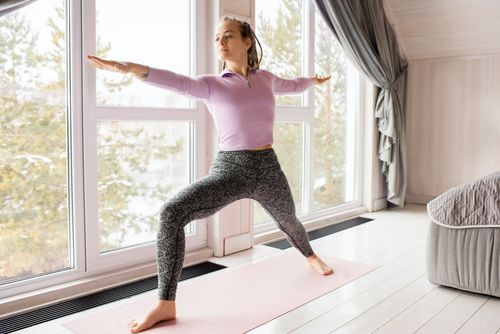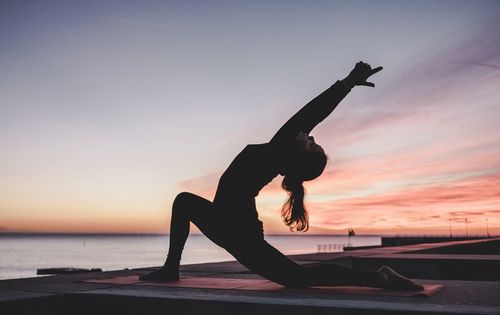What is Vinyasa Yoga?
Commonly referred to as "flow yoga" or "Vinyasa Flow Yoga", Vinyasa yoga is a style of yoga characterized by stringing postures or asanas together so that the person can seamlessly move from one to another using breath. The breath is synchronized with the continuous flow of asanas. The fluid movements help increase flexibility, strength and stamina. It can also improve overall health and calm the mind.

How Does Vinyasa Yoga Work?
In Vinyasa yoga, movement and breath coordination is observed. When doing the cobra pose, for instance, you inhale as you lower your body to a cobra pose then exhale as you lift your chest off the ground. Then, you inhale again as you get yourself into an upward-facing dog pose. Unlike other yoga styles where the postures are held for a period of time, Vinyasa Yoga is more dynamic as there is no pause in between poses.
The continuous movements involved in this type of yoga loosens up stiff joints and muscle restrictions in the body. The sequence of movements is not fixed, so the practitioner can decide which poses to include in the flow and arrange them as they see fit. The following are the most commonly used poses or asanas in Vinyasa yoga and their respective benefits:
- Child's pose helps in alleviating stress and reducing tension in the neck, back and shoulders. Also, it gently stretches the hips
- Cat-cow pose connects the movement from the breath and helps the person to become more physically present in his or her body. Also, it strengthens the core and increases spinal mobility
- Downward-facing dog opens areas that are usually tight such as the shoulders, hamstrings and calves. Also, it strengthens the arms, core, back and legs
- Forward fold opens the hamstrings without putting pressure on the wrists, shoulders or neck. Also, it relieves stress and calms the nervous system
- Mountain pose improves posture. Also, it reinforces a long, neutral spine and a strong core
- Plank pose works the entire body all at once. Also, it improves posture
- Upward-facing dog opens the chest and strengthens the arms, shoulders and abs
- Low lunge with a twist reduces tension in the hips, stretches and lengthens the quads and hamstrings
- Halfway split is great for the hamstrings, and it increases mental focus
- Crescent pose opens the hip flexors and strengthens the muscles located in the lower lumbar region
- Easy pose guides the attention back to the ebb and flow, the wavelike rhythm of the breath
What are the Benefits of Vinyasa Yoga?
Vinyasa yoga aims to create heat in the body which leads to purification through sweating and increased circulation. Also, it improves the flexibility of the body as well as strengthening the tendons and hard tissues, which allows the person to perform advanced asana without the risk of injuries.
The flowing movement of Vinyasa yoga helps in burning calories, which is instrumental in maintaining or losing weight. Vinyasa yoga beats out other styles of yoga in terms of the amount of calories being burned.
Also, Vinyasa yoga provides a mild cardiovascular response. A study published in the "Indian Journal of Physiology and Pharmacology" in 2004 reveals that two months of yoga training has improved the person's fitness levels and has resulted in better exercise tolerance.
Like other yoga styles, Vinyasa yoga can help in the prevention and treatment of different health conditions, including the following:
- Stress-related conditions
- Insomnia and other sleep disorders
- Anxiety
- Depression
- Headaches and migraines
- Addictions
- Lack of focus
- Arthritis
- Carpal tunnel syndrome
- Asthma
- Cardiovascular disease
- Postural problems
What Can You Expect From Vinyasa Yoga?
As a faster-paced yoga class, Vinyasa yoga was developed to strengthen the mind and the body through synchronised breathing and flowing movements. It is great for intermediate yoga students. However, it is not recommended for beginners.
A Vinyasa yoga class will include Sun Salutations. The class may be slow or fast, or be alignment-orientated, or include chanting. Some popular styles of yoga are actually styles of Vinyasa yoga but are listed by their own names.
A Vinyasa yoga session usually lasts from 45 minutes to an hour and a half, depending on the level of stamina of the class. In addition to a yoga mat, one needs to bring a small towel and a bottle of water to replace the fluids that their body loses throughout the session. Students are advised to wear comfortable clothing in light, stretchable material for ease of movement.
Ideally, Vinyasa yoga should be practised three to five times a week. It's important to make time for rest in order to avoid straining the muscles.
